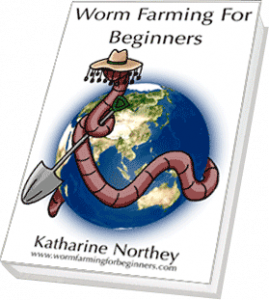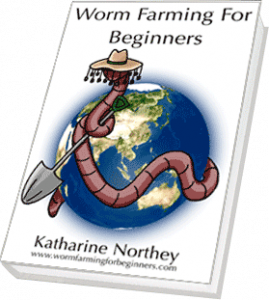Gardening FAQ•
on July 5th, 2010•
My plant looks sick , what do I do?!
When a plant looks sick most people just give it a drink of water and wait and see if this strategy works. In most cases this doesn’t work and in some, it even makes it worse. Below is a step by step list of things you can do to try and encourage your plant to become healthy and happy again.
WATERING: Have you been giving your plant adequate water? or possibly too much water? When watering a plant it is advised to only give the plant a small amount of water through a watering can. Allow this water to sink into the media and then, apply another small amount. Repeat this process until the media is thoroughly wet and in the case of potted plants , the water is coming out of the bottom of the pot. If you stand there and drench the plant in water all in one go the water will generally just spill over the surface area and follow gravity. this is either down the sides of your pot, away from the root system and out the bottom of the pot, or in the ground, will run off and soak in unevenly in a different location. By slowly adding water it has time evenly soak into the soil around the area where the fibrous roots are and to nourish the plant properly.
FERTILISING: There are two forms of fertilisers: soluble and solid form. Soluble fertilisers are taken up by the plant within approximately 48hrs while solid or pelleted fertilisers are broken down by microbes etc and slowly fed to your plant over a period of a few months. If you choose to use a soluble fertiliser then you will need to apply this a lot more frequently then a pelleted or slow release fertiliser. Soluble fertilisers are a good way to feed potted plants. Another factor to consider is the type of plant you are feeding. for example:
VEGETABLE AND FRUIT PLANTS: the golden rule with any edible plant is “Whatever you feed the plant you will eventually feed yourself “. In other words , if you use chemicals to feed your vegetable patch , at the end of the day you will end up consuming those chemicals in some form yourself. So if your growing food it is my strong recommendation to only use certified organic fertilisers. A combination of pelleted organic fertiliser and liquids such as Liquid Seaweed and Liquid Fish emulsions work well together.
NATIVE PLANTS: Native plants require only a small amount of phosphorus (P), so check the labelling on fertiliser to make sure it is suitable.
Stay tuned for more updates fortnightly , Happy Gardening and Worm Farming!
What to Feed the Worms
When it comes to feeding, just remember, “anything that was once living can be fed to the worms” (Nancarrow 98).
These include:
– Egg and avocado shells.
– Teabags and coffee filters. (remove the staple)
– Meat in very small amounts. Due to the flesh rotting and causing odours. (I choose not to feed my worms farm meat products)
– Any vegetable and a majority of fruits.
– Carbon – newspapers, cardboard. Be sure to moisten and tear into small strips
(a paper shredder comes in handy for this) prior to adding to your farm. Heavily inked paper is not advised.
– Unprocessed bran. This helps to clear out their systems and help to maintain a healthy worm farm.
– Mushrooms.
– Bananas.
– And, of course, leftovers!
But keep the following out of the worm farm:
– Hair.
– Fresh manures and wastes. These often have active vermicides in them so if you added these to your worm farm you would end up killing your entire population over night. If you are unsure of the age of the manure you would like to use be cautious and wait
– the maximum time (3 months) for the vermicides to dissipate.
– Heavily spiced foods.
– High concentrations of fats, salts, vinegars.
To find out all the foods you should and shouldn’t be feeding the composting worms check out the new book
“Worm Farming for Beginners”.
Have a look at the contents page to discover just what is needed to begin your own Vermiculture endeavour!
Worms•
on January 7th, 2010•
Vermiculture
Vermiculture: the simulated cultivation of composting worms and the scientific process used for extracting their by-products for the betterment of human beings.
Vermiculture: a form of composting utilising worms to fasten up the procedure.
Vermiculture can be the perfect answer for all eco-friendly gardeners out there. Do you want to create a self sufficient environment for yourself and your family?. With vermiculture you can create your own fertilisers, poultry feed, bait for fishing and soil improvers all by composting your own kitchen scraps (plus a few other things like old underwear!)
What is vermi-compost?
– Vermi-compost is the end product from composting with worms.
– Vermi-compost contains castings, broken down organic matter, bedding, worms, worm cocoons, and other organisms.- (Nancarrow 98).
What are castings?
– Castings are worm manure or excrement free from any bedding or food materials.
What is vermi-cast?
– Vermi-cast is what is created when the worms eat and re-eat the pre-existing media (vermi-compost) this produces a finer textured end product. This is the result from leaving the worm farm alone for a lengthy period of time.
Advantages of Vermicomposting.
- Vermicompost is a natural fertiliser made from eco-friendly, bio-degradable everyday “garbage” and is free from chemical inputs.
- Castings are odourless, non toxic, and are suitable to use on all plants, including delicate seedlings.
- Castings do not contain one single trace of E.coli, salmonella or other pathogens as- they are destroyed due to the competition from the active micro flora and intestinal secretions. Most of our human pathogens are anaerobic and cannot survive in the aerobic environment created by worms.
- It provides an immediately available water soluble plant food which is rich in nutrients.

- Castings act as a powerful biocide against disease and nematodes.
- Improvement of soil aeration, texture and water retention capacity of soil because of its high organic matter content.
- Castings strengthen the cell walls increasing the plants resistance to fungal disease, frost, and insect attack.
- Vermiculture encourages better root growth and nutrient absorption.
- The point of terminal wilt is also greater.
To find out all the facts about the benefits of Vermiculture (Worm Farming) check out the new book
“Worm Farming for Beginners”.
Have a look at the contents page to discover just what is needed to begin your own Vermiculture endeavour!

